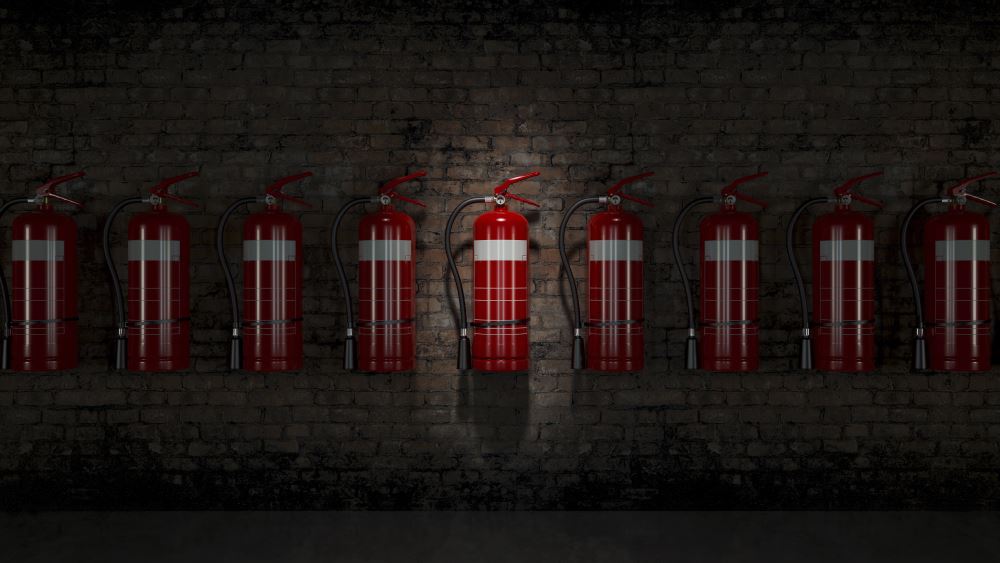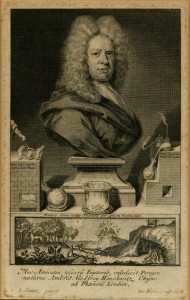Home / News / The Evolution of Fire Extinguishers
The Evolution of Fire Extinguishers

We take fire extinguishers a bit for granted nowadays and under health and safety laws they’re a legal requirement for the workplace, shops, schools etc basically any enclosed public space. I bet you’ve never stopped to think about how they’ve evolved over the years. They’ve certainly come a long way since their humble beginnings, and thankfully don’t contain the explosives they once did. I kid you not; the first fire extinguishing machine contained gunpowder. Fire and gunpowder – a winning combination! The premise behind Ambrose Godfrey’s machine, which was released in 1723, was that the explosion from the gunpowder would disperse the fire suppressant over the fire. It was only in use for a few years, which may provide some insight on its ability to do the job safely.
Since humans discovered they could create fire, it has always posed a hazard. Straw huts, wooden structures and fires didn’t particularly go together well and water was the preferred choice of extinguishing flames. But getting the water to the fire was often an issue. In 200BC there are records of the invention of a water pump but with absence of hoses it was an arduous task to get the water to the fire and lines of people with buckets was the only way to do this.

Then during the Middle Ages someone invented a ‘squirt’ which used a plunger like action to suck water into a vessel then push it out again. These were still being used in the Great Fire of London in 1666. Next came Godfrey and his gunpowder extinguisher! It was in 1819 that a turn was made and Captain George William Manby introduced the first portable extinguisher. The design featured a copper vessel that was filled with potassium carbonate and compressed air. When released the fire was showered with the solution. In fact some fire extinguishers today still feature potassium carbonate.
During the late 19th Century more developments were made and the soda-acid extinguisher was released. This consisted of a cylinder filled with a sodium bicarbonate and water solution. Also inside was a vile containing sulphuric acid. Once the two solutions combined carbon dioxide was produced which in turn expelled the water onto the fire. All extinguishers to this point had been relatively safe to the user, however in 1912 the CTC extinguisher was invented and its contents were carbon tetrachloride. It provided an excellent solution for both liquid and electrical fires, however it proved extremely toxic in confined spaces and by the 1950’s its use had been withdrawn.
The breakthrough in fire extinguishers came with the realisation that not all fires are equal and what you use to extinguish them will play a vital role in how quickly the fire is contained and extinguished. This knowledge has directly shaped the evolution of the myriad of fire extinguishers that we see today. Although the choice seems confusing, it’s highly important to use the correct extinguishers for the correct type of fire to ensure you gain control and extinguish it as quickly as possible. There are currently six classes of fire which are categorised A-F based on the property of substance that is alight:
- Class A – solid substances such as wood, paper, plastics and textiles
- Class B – flammable liquids
- Class C – flammable gasses
- Class D – burning metals
- Class E – electrical fires
- Class F – cooking oils and fats.
The fire extinguishers themselves can be put into six categories; however if you are looking to buy fire extinguishers you will find a great deal of options within these groups.
Water extinguishers are very effective at putting out Class A fires but should never be used for any other class as the water may make the situation worse.
Foam extinguishers can be used for Class A and B fires and they deposit a frothy mixture over the flames starving the fire of oxygen and separating the flames from the fuel.
Dry Powder extinguishers are often referred to as multi-purpose extinguishers as they can be used to tackle Class A, B, C and E fires. The powder controls the flames by acting as a coolant.
Another extinguisher that can be used for electrical fires is the CO2 extinguisher which is also effective on Class B fires. The carbon dioxide suffocates the fire by displacing the oxygen.
The only extinguisher that can used on Class D fires is the Specialist Powder extinguisher. It is designed with a low velocity applicator that provides control over the spread of fire from combustible metals such as lithium and aluminium.
Finally, the most recent addition is the Wet Chemical extinguisher that has been introduced to address the unique character of fires started from cooking oils and fats. Scientists developed an extinguisher that uses the chemical reaction saponification. The wet contents of the fire extinguisher react with the oil to create a soapy substance that suffocates the flames. Not only does it extinguish the flames but it also acts as a coolant to prevent the fire reigniting. The development of these Class F extinguishers has been welcomed by commercial kitchens and processing plants where oil fires are high risk.
A simple risk assessment should help to determine how many extinguishers and what type are needed for your business, but educating staff is highly important to ensure that if the worse happens the right extinguisher is being used.




